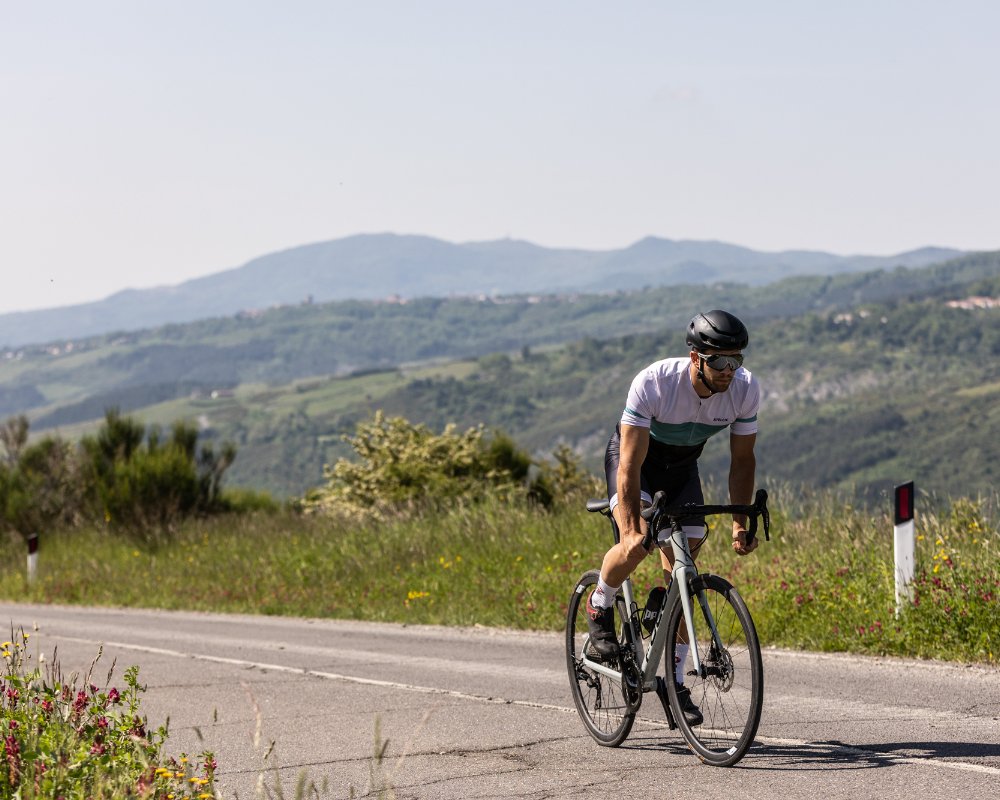The ring of Mount Amiata


From a distance, the volcanic origin of Mount Amiata is evident, standing out, wide and lonely on a territory with no other peaks that can hold a candle to it. An island, in short, rising between the Maremma and the Apennine ridge.
And what could be more beautiful than making the circumnavigation of an island, in order to see it from all its sides? So, we will set off on this excursion, without the need for a boat license or a sailboat but armed only with a road bike.
The itinerary is close to 180 km for 3250 m of elevation gain, so it cannot be considered a day itinerary. You need to plan at least three days (two if one is well trained) plus perhaps an additional day for the climb to the summit (1738m asl), which is unavoidable if you want to say you have met the giant.
The possibilities of breaking up the itinerary are multiple and much depends on where you decide to start. In this description, we start from Abbadia San Salvatore and can therefore recommend finishing the first stage in Roccalbegna, after 66 km and 1120m of elevation gain. The second one could end in Castiglione d’Orcia (another 59 km and 1210m of elevation gain), and then close the loop by returning to Abbadia with the last 52 km for 920m elevation gain.
We then set off from Abbadia San Salvatore, one of the most important and historic towns in the area, named after the ancient Benedictine Abbey founded in 743 by the Lombard king Rachis, and head south, toward Piancastagnaio.
Five kilometers slightly downhill and here we are under the village’s Aldobrandesque fortress, overlooking the valley of Paglia River.
The descent becomes steep until we reach the valley floor; here we turn right, following the signs for Castell’Azzara, our next destination. After about 5 km, we will arrive at the large Sforza villa, where we will continue straight ahead, ignoring the signs for Castell’Azzara, signs that, however, we will follow later, to reach the 786 meters of the village. The road continues through the woods of the Pigelleto nature reserve, with a series of ups and downs that will still take us to 930 m above sea level, where the descent to Santa Fiora begins, where we may end the first stage.
Shortly after Santa Fiora, the road begins to climb again and then descend again up to Roccalbegna, a small town overlooked by a rocky spur on which the remains of an Aldobrandesque fortress could not be missed.
From here begins a long up-and-down stretch that will take us to Castiglione d’Orcia, touching a series of towns all worthy of a stop: Stribugliano, Monticello Amiata, Arcidosso, Castel del Piano and Seggiano.
Castiglione d’Orcia also deserves to be a stopover point in order to better enjoy the historic and artistic beauty of the town, overlooked by two fortifications, the Tentennano Fortress and the Aldobrandesque Fortress. Don’t miss passing through the hamlet of Rocca d’Orcia, beautifully preserved.
The restart takes us all the way to the valley floor of the Orcia River, at the gates of Bagno Vignoni, a town that is certainly worth the detour to see the large thermal pool and ancient Roman thermal baths.
We then ride up the Orcia River for about twenty kilometers, until we tackle the last two climbs. The first will take us to Radicofani, a historic village on the Via Francigena topped by the imposing fortification of Ghino di Tacco. The last part of the road before the village (about 3.5 km) is the only one on a dirt road in the whole itinerary; asphalt purists can still continue straight ahead, at the crossroads where the dirt road begins, and arrive equally at Radicofani with a couple of additional kilometers The last stretch descends to the valley floor of Paglia and then climbs up the opposite side, touching 915 m altitude and finally closing the ring on a slight descent to Abbadia San Salvatore.